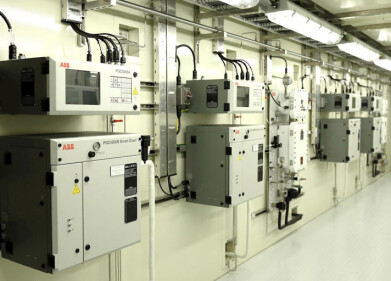Air monitoring
Auto GC Evaluation with Embedded Calibration Using Permeation Tubes
Jul 25 2016
Ambient air is polluted by many VOCs coming from Petrochemical Industry. PAMS*, Oxygenated or Halogenated VOCs can be found in many ranges of concentration between background and site fence line. These compounds are precursors of ozone and Industrial bodies need to identify them to be in compliance with the authorized limits and to improve their process.
Actually, more than 88 compounds are mentioned in US EPA list considering PAMS 56*, TO 14 or TO 15** methods. The use of calibration device is a crucial point to validate data and could be difficult when a certain amount of compounds are present.
For VOCs monitoring in ambient air, Chromatotec (France) has developed a system capable of measuring a large number of VOCs from ppt to ppm, on line and in field conditions. The device is required to identify automatically potential coeluted compounds by MS technology adapted to industrial context. The originality of the project consists in coupling two different FID GCs to a Quadripole MS allowed by an elaborated multiplexer system: one TDGC for light compounds and one TDGC for heavy compounds with specific trapping conditions and variable sampling volumes. This solution integrates internal permeation tube for automatic data validation. One using butane for C2-C6 molecule range, the other using Benzene for C6-C12.
One of the advantage of the solution is enabling to provide accurate reference points for the verification of an analysis using internal permeation tube. No needs of specific gas mixture. This solution is interesting since static mixtures in gas cylinders could be unreliable and inaccurate at the levels (ppm to ppb) that analytical technology now demands. In gas cylinders containing low level mixtures, the trace components often adsorb on to, or react with, the cylinder walls causing the standard to be inaccurate and unreliable. Also, it may be impossible to get a matrix gas that is completely free of trace component, thus making it impossible to get a true reference point with a cylinder mixture. The use of permeation tubes instead of gas cylinders offers a good alternative.
As example of use, measurement campaign on a petrochemical new site shows concentration of about 100 compounds at different steps of the commissioning. Variations during specific hours are detected. Potential coeluted compounds like terpenes or organochlorinated are identified and monitored at ppt level.
The ability of coupling in continuous two different GCs to a unique MS and the automatic identification is a new advance in industrial GC-MS technology. The big advantage is the possibility to play with two different trapping and thermo-desorption techniques linked to one MS. This fully automatic system allows non-specialist operators to access to expertise level results.
The data are validated in automatic mode thanks to combined permeation tube using butane as reference for light molecule (C2C6) and benzene for more heavy compounds (C6C12).
Actually this solution is used in autoGC evaluation driven by US EPA. Chromatotec technologies are recognised as performant in this evaluation test integrating autoGC FID with permeation tubes.
* Photochemical Assessment Monitoring Stations (PAMS)
Digital Edition
AET 28.4 Oct/Nov 2024
November 2024
Gas Detection - Go from lagging to leading: why investment in gas detection makes sense Air Monitoring - Swirl and vortex meters will aid green hydrogen production - Beyond the Stack: Emi...
View all digital editions
Events
Jan 20 2025 San Diego, CA, USA
Carrefour des Gestions Locales de L'eau
Jan 22 2025 Rennes, France
Safety, Health & Wellbeing LIVE
Jan 22 2025 Manchester, UK
Jan 25 2025 San Diego, CA, USA
Jan 29 2025 Tokyo, Japan



















